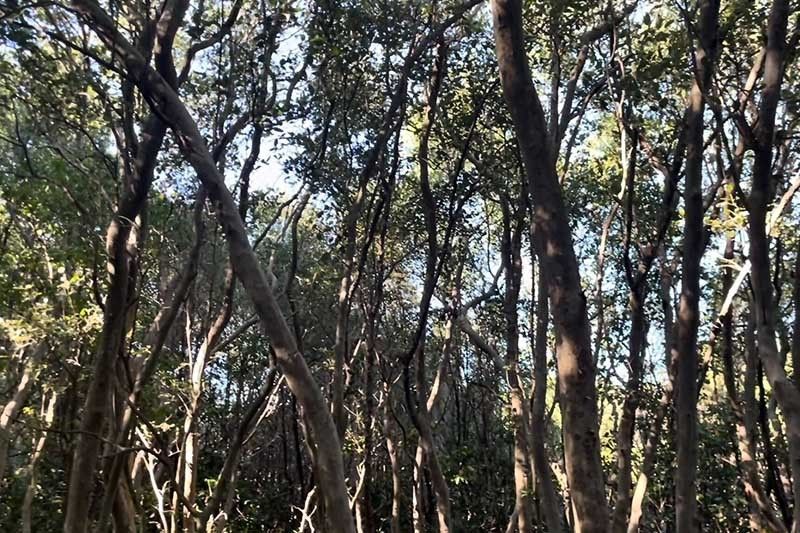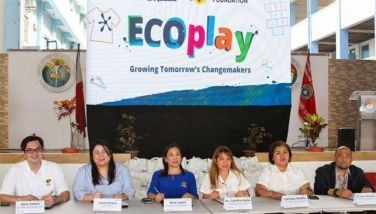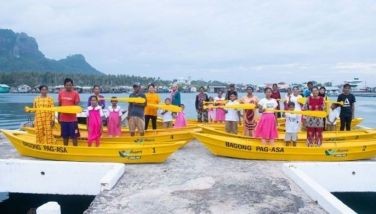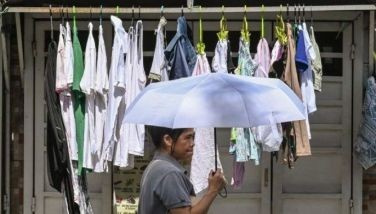Balanga’s wetland park offers refuge for migratory birds, protection for coastal folk

BATAAN, Philippines — As the first rays of the sun painted the northern Manila Bay with a warm glow, thousands of birds—little grebes, egrets and terns—erupted in a flurry of activity.
These water birds were just a fraction of the migratory species that found refuge in the mudflats, mangroves and coastal areas of Barangay Tortugas in Balanga City.
The Philippines, situated along the East Asian-Australasian Flyway, is an important stopover for these birds escaping harsh winters in their countries of origin. These feathered visitors typically arrive around September and leave around March.
The presence of migratory birds was not just a lovely sight for birdwatchers and conservationists, it was a testament to the thriving ecosystem of the Balanga Wetland and Nature Park.
Birds’ haven
In 2005, a collaboration between the provincial government and the Wild Bird Club of the Philippines led to the establishment of the 11-hectare Balanga City Wetland and Nature Park.
The initiative came after the late Governor Enrique Garcia recognized the area’s potential as a haven for migratory birds, particularly during the “ber” months, according to tourism officer Alan Valbuena.
To capitalize on the area’s tourism potential, the local government launched the “Ibong Dayo” festival in 2010.
The wetland park’s significance was further highlighted in 2019 when former President Rodrigo Duterte signed a law declaring it a “responsible, community-based ecotourism zone.”
Beyond its reputation as a bird watching spot, the Balanga City Wetland and Nature Park plays a crucial role in the lives of local fishermen. Working hand-in-hand with the government, these fishermen actively participate in preserving and protecting the area.
“It’s good because it’s LGU-led. The local government saw the value of the wetland in terms of fisheries and biodiversity in the area. They also saw its benefits for coastal protection,” said Jocel Pangilinan, project manager of Wetlands International Philippines.
Breeding ground, coastal defense

The park’s extensive mangrove forest functions as a feeding and breeding ground for marine organisms, especially fish.
City agriculture officer Daisy Lacanilao attributes the 85% increase in fishers’ catch since 2010 to the thriving mangrove forest.
“Before the mangroves, our catch was meager. But when the number of mangroves we planted increased, our catch has improved,” 69-year-old fisherman Benjie Manuel said in Filipino.
He said fishers are now pulling in 30 to 40 kilos a day, compared to just five kilos before.
“[The wetland park] greatly benefits the fishermen who live here,” Manuel added.
Mangroves also act as a buffer against tropical cyclones and storm surges.
“In the past, even with just Wind Signal No. 1, our boats, houses, and even fishponds would be destroyed. But now that we have these mangroves, the impact of the wind has become less severe. Our houses are no longer easily damaged or torn apart,” 62-year-old fisher Rolando Villaseñor said.
Manuel and Villaseñor are among the 24 Bantay Dagat volunteers who safeguard the city’s mangrove forests and coastal waters. Their duties include collecting plastic waste, preventing illegal fishing activities, and fending off locals who attempt to cut down the mangroves.
Bantay Dagat volunteers receive only P1,000 per month for their valuable services.
“They’re actually the ones who experience the impacts, but they also experience the benefits coming from coastal wetlands like mangroves,” Pangilinan said.
“It’s very important for them to be capacitated so they’ll be able to actively participate not only in restoring mangroves, but also in protecting and ensuring the mangroves will stay here forever,” she added.
Threats to ecosystem
Despite its success, the Balanga wetland park faces significant challenges.
Land reclamation for development projects and conversion of wetland areas for agriculture or aquaculture use threaten the park’s ecosystem, according to Pangilinan.
Manila Bay has lost nearly 99% of its mangrove forests, according to Oceana Philippines. In 1980, there were 54,000 hectares of these vital ecosystems. By 2016, only 680 hectares remained.
In August 2023, President Ferdinand Marcos Jr. ordered the suspension of reclamation projects in Manila Bay pending a review of their environmental and social impacts, as well as compliance with regulations.
The Philippine Reclamation Authority, however, said that three projects could resume this year once the suspension on reclamation activities is lifted.
Wetlands International Philippines also warned that the newly-signed Philippine Salt Industry Development Act might exacerbate the degradation of mangroves across the archipelago.
The Department of Environment and Natural Resources said last week that it will map and identify public lands, including portions of municipal waters and abandoned fishponds, as suitable for salt production areas.
Conservationists have been urging the government to fast-track the reversion of abandoned fishponds to mangroves instead of using ponds for salt farming.
Pangilinan also noted that constructing seawalls and fencing around the park disrupts the natural flow to and from the mangroves, affecting nearby mudflats.
Plastic pollution in Manila Bay further compounds the challenges.
Wetland management
To ensure the park’s long-term sustainability, Pangilinan recommended a comprehensive Bataan wetland management plan. This plan should balance conservation efforts with sustainable resource use and community needs.
The conservationist stressed that strict land-use regulations are crucial to prevent further encroachment and wetland conversion. Sustainable fishing practices, including gear restrictions, will allow fish populations to recover and establishing marine protected areas will offer additional refuge for aquatic life.
Authorities should also provide alternative livelihood programs to coastal communities involved in park management and patrolling, Pangilinan suggested.
“These can be biodiversity-friendly livelihoods or non-resource based livelihoods wherein they can still volunteer or work with the local government in terms of the protection of the area, but they’re not deprived of earning income,” she said.
Groups like Wetlands International Philippines are advocating for bills on integrated coastal management and a national greenbelt action plan. These would provide a legal framework for implementing nature-based solutions that enhance coastal protection while offering co-benefits like carbon sequestration and biodiversity conservation.
The integrated coastal management bill seeks to promote a holistic approach to managing coastal resources, ensuring development activities that do not compromise the resilience of coastal ecosystems.
Meanwhile, the national greenbelt action plan will prioritize the conservation of mangroves, seagrass beds and coral reefs.
“The bills will also promote the integration of climate change adaptation into coastal zone management plans, ensuring that coastal communities are better prepared to cope with the impacts of climate change,” Pangilinan said.
- Latest




























